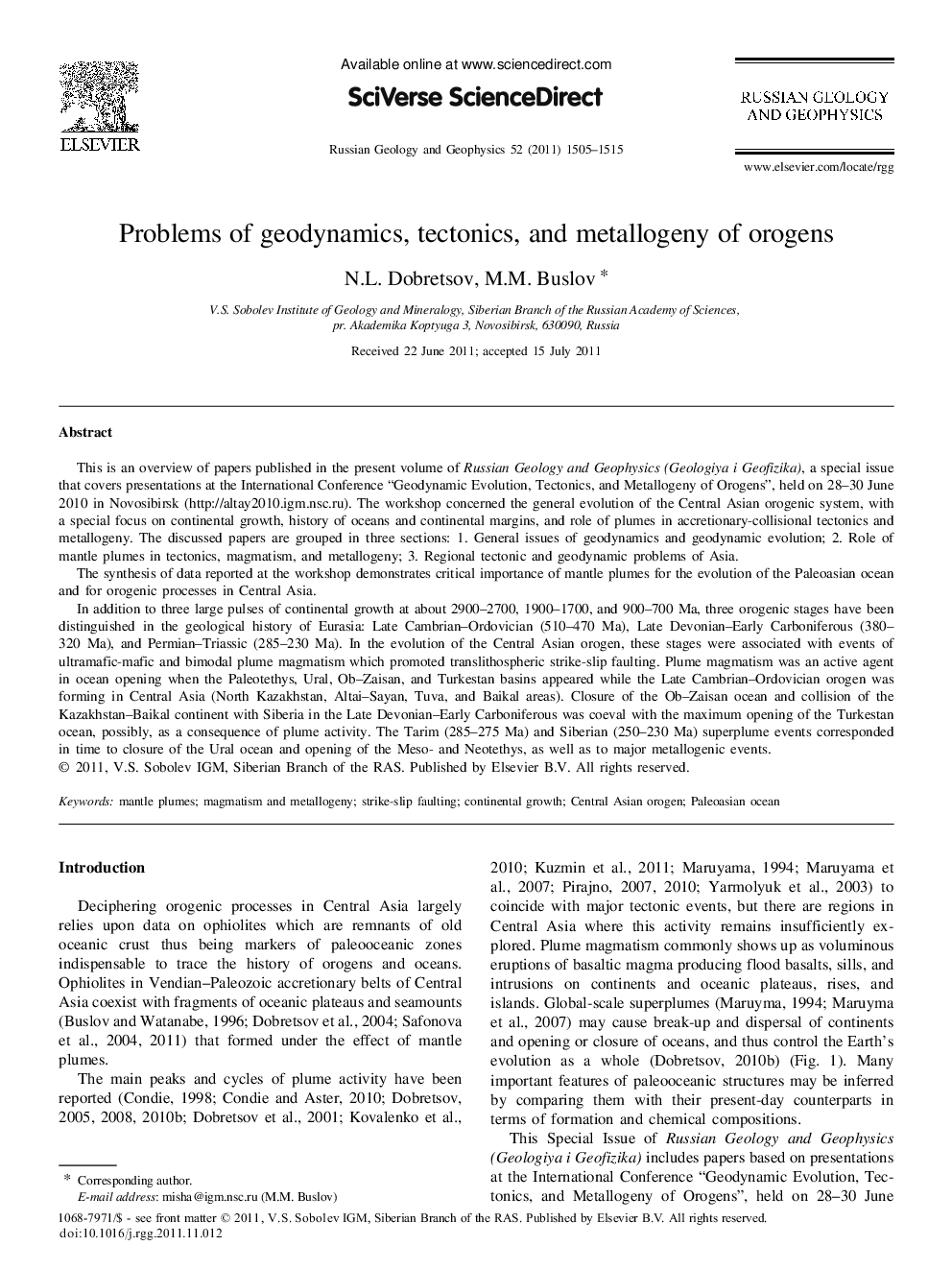| کد مقاله | کد نشریه | سال انتشار | مقاله انگلیسی | نسخه تمام متن |
|---|---|---|---|---|
| 4738543 | 1358325 | 2011 | 11 صفحه PDF | دانلود رایگان |

This is an overview of papers published in the present volume of Russian Geology and Geophysics (Geologiya i Geofizika), a special issue that covers presentations at the International Conference “Geodynamic Evolution, Tectonics, and Metallogeny of Orogens”, held on 28–30 June 2010 in Novosibirsk (http://altay2010.igm.nsc.ru). The workshop concerned the general evolution of the Central Asian orogenic system, with a special focus on continental growth, history of oceans and continental margins, and role of plumes in accretionary-collisional tectonics and metallogeny. The discussed papers are grouped in three sections: 1. General issues of geodynamics and geodynamic evolution; 2. Role of mantle plumes in tectonics, magmatism, and metallogeny; 3. Regional tectonic and geodynamic problems of Asia.The synthesis of data reported at the workshop demonstrates critical importance of mantle plumes for the evolution of the Paleoasian ocean and for orogenic processes in Central Asia.In addition to three large pulses of continental growth at about 2900–2700, 1900–1700, and 900–700 Ma, three orogenic stages have been distinguished in the geological history of Eurasia: Late Cambrian–Ordovician (510–470 Ma), Late Devonian–Early Carboniferous (380–320 Ma), and Permian–Triassic (285–230 Ma). In the evolution of the Central Asian orogen, these stages were associated with events of ultramafic-mafic and bimodal plume magmatism which promoted translithospheric strike-slip faulting. Plume magmatism was an active agent in ocean opening when the Paleotethys, Ural, Ob–Zaisan, and Turkestan basins appeared while the Late Cambrian–Ordovician orogen was forming in Central Asia (North Kazakhstan, Altai–Sayan, Tuva, and Baikal areas). Closure of the Ob–Zaisan ocean and collision of the Kazakhstan–Baikal continent with Siberia in the Late Devonian–Early Carboniferous was coeval with the maximum opening of the Turkestan ocean, possibly, as a consequence of plume activity. The Tarim (285–275 Ma) and Siberian (250–230 Ma) superplume events corresponded in time to closure of the Ural ocean and opening of the Meso- and Neotethys, as well as to major metallogenic events.
Journal: Russian Geology and Geophysics - Volume 52, Issue 12, December 2011, Pages 1505-1515